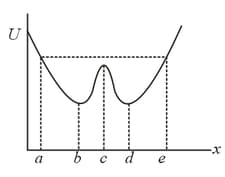A block attached to an ideal spring with a spring constant of oscillates on a horizontal frictionless surface. When the spring is shorter than its equilibrium length, the speed of the block is The greatest speed of the block is

Important Questions on Work, Energy and Power
For a block of mass to slide without friction up the rise of height shown, it must have a minimum initial speed of

A simple pendulum consists of a mass attached to a string. It is released from rest at as shown. Its speed at the lowest point is
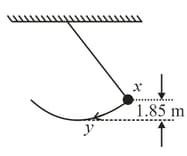
A block is released from rest at point and slides along the frictionless track shown. At point its speed is
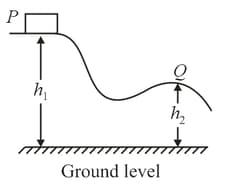
A ball is held at a height above a floor. It is then released and falls to the floor. If air resistance can be ignored, which of the five graphs below correctly gives the mechanical energy of the Earth-ball system as a function of the altitude of the ball?
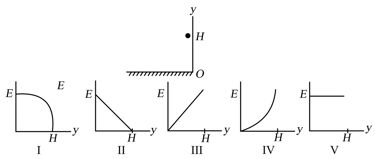
The graphs below shows the force acting on a particle when it moves along the positive -axis from the origin to The force is parallel to the -axis and is conservative. The maximum magnitude has the same value for all graphs. Rank the situations according to the change in the potential energy associated with the force, least (or most negative) to greatest (or most positive)
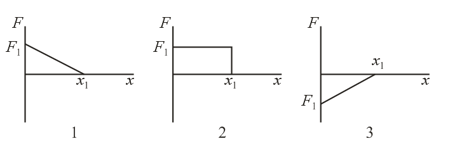
A particle is released from rest at the point and moves along the -axis subject to the potential energy function shown. The particle
